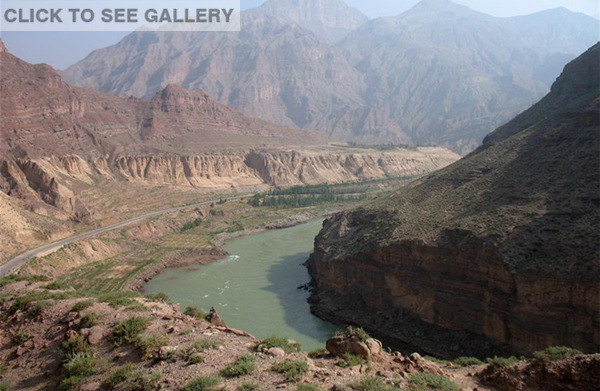Scientists have found what could be geological evidence of a legendary flood tied to the establishment of the first dynasty in China, Xia, and even the beginning of Chinese civilization, a study published in the U.S. journal Science said Thursday.
The flood occurred in roughly 1920 BC on the Yellow river, the study said, which is some two to three centuries later than traditionally thought, meaning the Xia dynasty, and its renowned Emperor Yu, likely had a later start than Chinese historians have thought, too.
According to Chinese legend, Emperor Yu tamed this flood by dredging, earning him the divine mandate to establish the Xia dynasty.
However, no scientific evidence has been discovered before, leading some scholars to believe that the legend of Xia was just a fabrication of later historians to justify political succession, said Qinglong Wu of the Nanjing Normal University, who led the study.
In the new study, Wu and colleagues reported geological evidence for a catastrophic flood on the Yellow River about 4,000 years ago, including remains of a landslide dam and dammed lake sediments.
He said the flood was the result of an earthquake-induced landslide that dammed the Yellow River to form a huge lake in the Jishi Gorge on the edge of the Tibetan Plateau.
Landslide dams like this typically fail by overtopping, and in this case, the dam could have completely blocked the Yellow River for six to nine months before overtopping, said Wu.
"Roughly 11 to 16 cubic kilometers of the dammed lake water was released in a very short period of time when the dam broke, resulting in a huge flood," he told Xinhua.
Using a standard engineering equation to determine flood discharge, the researchers calculated that the waters could have surged down the river at a rate of 300,000 to 500,000 cubic meters per second. The damage may have reached as far as 2,000 kilometers downstream.
"To put that into perspective, that's roughly equivalent to the largest flood ever measured on the Amazon River, the world's largest river," study co-author Darryl Granger, a geologist at Purdue University, said at a teleconference.
"It's among the largest known floods to have happened on earth during the past 10,000 years, and it's more than 500 times larger than a flood we might expect on the Yellow River from a massive rainfall event. So this cataclysmic flood would've been a truly devastating event for anyone living on the Yellow River downstream."
To date the outburst flood, the researchers used radiocarbon dating techniques on skeletons of children who died in the same earthquake that triggered the massive landslide dam, at a prehistoric settlement site called Lajia, 25 kilometers downstream from the Jishi Gorge.
Results showed that the flood happened around 1920 BC, which coincides with the major transition from the Neolithic to the Bronze Age in the Yellow River valley.
"Because this flood happens at a critical turning point in the development of Chinese civilization, this geological event takes on even greater significance," said David Cohen, an archaeologist at National Taiwan University, who also worked on the study.
"This is because the flood dates to the likely period where China's legendary great flood. This is the first time a flood of scale large enough to account for it has been found. The outburst flood could've caused social disruptions downstream lasting for years, and if this is the case, we think it could've been the source of the great flood legend."
According to legend, it took Emperor Yu and his farther about 20 years to tame this flood. As a result, the researchers proposed a new start date for the Xia dynasty, at 1900 BC.
"The outburst flood provides us with a tantalizing hint that the Xia dynasty might really have existed," Cohen said.
"Our reasoning is like this, if the founding of the Xia dynasty is really tied to a great flood, then here we have evidence for a natural event that could have eventually been recorded as the great flood," he said. "If the great flood really happened, then perhaps it is also likely that the Xia dynasty really existed too. The two are directly tied to each other."
Traditionally, historians have dated the start of Xia to about 2200 BC, whereas a government-sponsored chronology project adopted the date as 2070 BC.
In an accompanying perspective in Science, David Montgomery of the University of Washington wrote: "Great floods occupy a central place in some of the world's oldest stories. And Emperor Yu's flood now stands as another such story potentially rooted in geological events."



















































